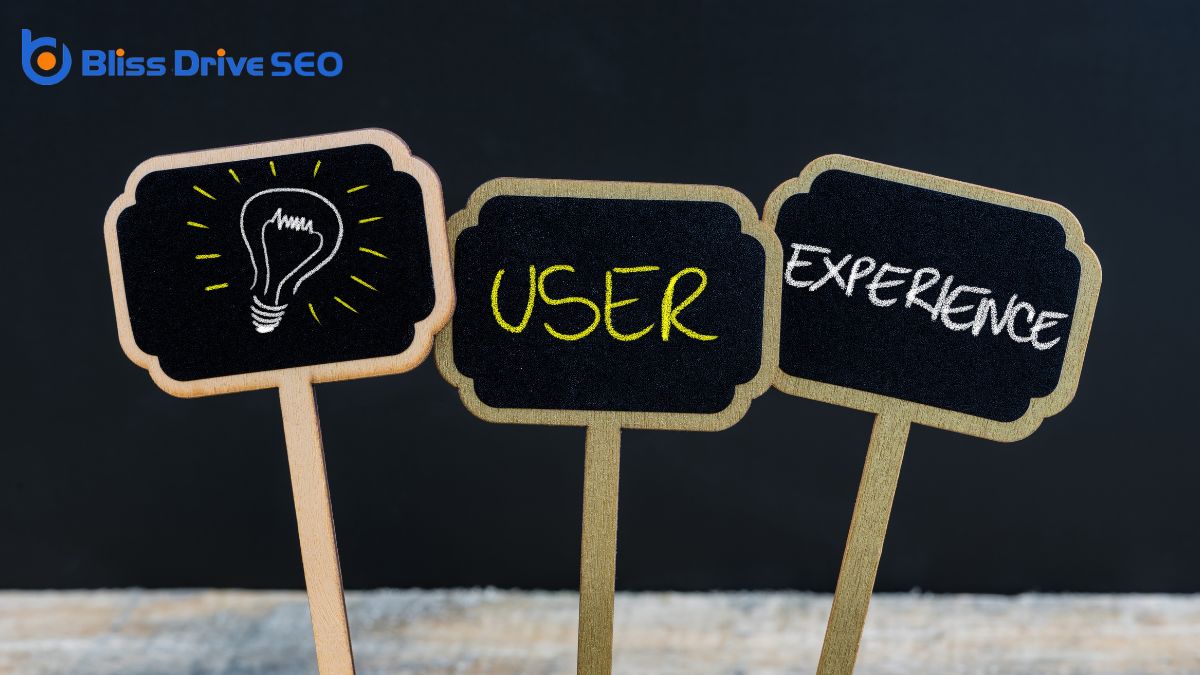Digital Marketing Services
Learn More About Us

To optimize mobile usability for superior SEO, you need to prioritize responsive designA web design approach that makes web pages render well on a variety of devices and window or screen ..., fast loading speeds, and user-friendly navigation. Guarantee your site utilizes touch-friendly elements, condenses images, and reduces file sizes to enhance performance. Focus on intuitive navigation with clear call-to-action buttons, and avoid using intrusive pop-ups or Flash. Google's mobile-first indexingGoogle’s practice of using the mobile version of a website for indexing and ranking. means optimized mobile sites rank higher. Incorporate structured data to boost visibility and use local SEOOptimization strategies aimed at improving a website’s visibility in local search results. strategies to attract nearby customers. Improving mobile usability not only enhances user experience but also greatly enhances your SEO rankingsThe position at which a website appears in the SERP.. Stay tuned to discover more ways to perfect your mobile strategy!

Mobile optimizationDesigning and formatting web content to ensure it performs well on mobile devices. isn't just a luxury—it's a necessity for SEO success. With over 50% of global internet traffic coming from mobile devices, search engines consider mobile optimization an essential factor for ranking websites. Google's mobile-first indexingThe process of adding web pages into a search engine's database. means the search engine prioritizes mobile-optimized sites, making it clear that mobile optimization is vital for achieving higher search engine results.
Optimizing your site for mobile devices isn't only about ranking well on search engines. It's about enhancing the user experience, which is essential for reducing bounce rates and increasing user engagementThe interactions that users have with a brand’s content on social media.. When your website is mobile-friendly, visitors are more likely to stay longer and interact with your content, leading to improved conversionThe completion of a desired action by a referred user, such as making a purchase or filling out a fo... rates.
Page speed optimization and responsive design are key components of mobile optimization. Faster loading times ensure users don't leave your site out of frustration, while responsive design ensures your site looks and functions well on various screen sizes.
With 90% of US internet users accessing the web via mobile devices, the importance of mobile optimization for SEO can't be overstressed.
Browsing a website on a mobile device should be smooth and user-friendly. Mobile user-friendliness refers to how easily users can interact with your mobile site. If your mobile site isn't up to standard, you're not only frustrating users but also hurting your SEO rankings. A whopping 57% of users won't recommend a business with a poorly designed mobile site, making mobile user-friendliness essential for your success.
Key elements of mobile user-friendliness include responsive design, touch-friendly elements, and intuitive navigation. Responsive design ensures your website looks great and functions well on any device. Touch-friendly elements make it easy for users to interact with your site using their fingers, enhancing the overall user experience. Intuitive navigation helps users find what they're looking for quickly, reducing frustration and increasing satisfaction.
Optimizing mobile user-friendliness has direct benefits. It can reduce bounce rates, keeping users on your site longer. Better user experience leads to higher conversions, turning visitors into customers. Additionally, superior mobile user-friendliness boosts website performance, making your site faster and more efficient. Prioritizing these elements not only pleases your audience but also improves your SEO rankings, driving more traffic and success.
Understanding the importance of responsive web design is fundamental for providing a seamless user experience across various devices. When your site adjusts its layout to different screen sizes, you're ensuring that users can easily navigate, regardless of whether they're on a smartphone, tablet, or desktop. This adaptability is at the core of mobile optimization and is one of Google's top recommendations for best practice.
Responsive design isn't just about aesthetics; it directly impacts how users interact with your site. A mobile-friendly site leads to lower bounce rates and higher conversion rates because users find it easier to engage with your content.
In fact, 57% of users won't recommend a business if its mobile site is poorly designed. This highlights the significance of investing in responsive design.
Moreover, Google's mobile-first indexing means that a well-optimized, mobile-friendly site can greatly boost your search rankings. When Google sees that your site offers a seamless user experience across all devices, it rewards you with better visibility.
As a result, embracing responsive design isn't optional—it's essential for enhancing your site's usability and driving your business's success. Prioritizing this will help keep visitors engaged and improve your overall SEO performance.
To keep mobile users engaged, focus on speed optimization techniques like image compression and efficient code minimization.
Leveraging browser caching can also provide a significant boost to site performance.
Implementing these strategies guarantees your mobile site loads quickly, reducing bounce rates and improving SEO rankings.
Images play an important role in creating visually attractive websites, but they can also be a major culprit in slowing down page load times. Image compression is a vital technique for reducing file sizes without compromising quality, thereby improving website loading speed.
By optimizing images specifically for mobile devices, you can greatly enhance user experience and boost your SEO rankings. Compressed images load faster on mobile devices, which is crucial for reducing bounce rates and increasing conversions. Tools like JPEGmini and TinyPNG efficiently compress images, ensuring they retain quality while being optimized for the web.
Additionally, implementing lazy loading for images means that images are only loaded as they come into the user's viewport, further speeding up page load times. Optimizing images not only benefits your website's performance but also contributes to a better overall user experience.
Faster loading pages keep users engaged, reducing the likelihood they'll leave your site due to slow load times. This can have a direct positive impact on your SEO rankings, as search engines favor websites that provide a seamless experience. Make sure to prioritize image compression and lazy loading to keep your mobile site efficient and user-friendly.
Optimizing images is just one piece of the puzzle when it comes to speeding up your mobile site. To further enhance mobile usability and improve SEO, you should leverage browser caching. By storing website files locally on a user's device, browser caching reduces loading times for returning visitors. This technique minimizes server requests and data transfer, which can greatly boost your site's speed.
Implementing browser caching can leadA potential customer referred by an affiliate who has shown interest in the product or service but h... to up to an 80% reduction in load times for repeat visitors, making your website faster and more efficient. The benefits of leveraging browser caching include:
To reap these benefits, you'll need to properly configure your browser caching settings. Focus on setting appropriate expiration dates for different types of files. This way, users won't have to download the same files repeatedly, leading to a smoother browsing experience.
When it comes to accelerating your mobile site, minifying code effectively is a game-changer. By removing unnecessary characters and spaces, you can notably reduce file sizes, which in turn enhances loading speed. This not only improves mobile usability but also contributes to a smoother user experience, both of which are essential for superior SEO performance.
Tools like UglifyJS and Closure Compiler are invaluable for effectively minifying your JavaScript code. They strip away redundant elements and streamline your scripts, making your code cleaner and more efficient for mobile optimization.
Don't overlook your CSS files either; minimizing them can make your stylesheets more efficient, ensuring they load faster on mobile devices.
Proper code minification is more than just a technical tweak; it's a strategic move that can elevate your site's performance. Quicker load times result in happier users and lower bounce rates, both of which enhance your site's SEO.

Enhancing user experience on mobile devices is crucial for retaining and engaging users, especially considering that 57% of users won't recommend a business with a poorly designed mobile site. To improve user experience, start by ensuring your site has fast loading times. Mobile users are quick to abandon sites that take over 3 seconds to load. This not only frustrates users but also impacts your revenue.
Incorporate user-friendly navigation and touch-responsive design elements to make your site easy to use. Users should be able to find what they need without any difficulty.
Don't overlook the significance of optimizing content for mobile consumption. This means ensuring text is legible without zooming and images are properly adjusted. A well-optimized mobile site can greatly enhance conversion rates.
Structured data can greatly boost your mobile searchUsing a mobile device to conduct internet searches. visibility by providing search engines with clear information about your content. When you implement structured data markup, you enhance content understanding and improve click-through rates with rich snippetsEnhanced search results featuring extra information like ratings or images. in search results.
This not only helps users find what they need but also improves your overall SEO performance.
Leveraging structured data for mobile SEOOptimization techniques to ensure a website performs well on mobile devices. is a powerful way to boost your search visibility. By implementing structured data markup, you help search engines understand and display your content more effectively on mobile devices. This can lead to rich snippets in mobile search results, which greatly enhances visibility and attracts more users.
Here's how you can benefit from structured data for mobile optimization:
Incorporating structured data markup into your mobile strategy isn't just about enhancing visibility. It's also about boosting search performance and improving user experience. By presenting information in a concise format, users can quickly find what they need, making your content more engaging and accessible. Focus on these elements, and you'll see a considerable improvement in your mobile search visibility.
When you implement structured data on your mobile website, you make it easier for search engines to understand your content, which in turn boosts your visibility in search results. Using structured data markup, you give search engines additional context about your content. This helps them index your mobile website more effectively, leading to improved search engine performance.
Structured data markup can notably enhance your chances of appearing in rich snippets on mobile search results, making your content more appealing and clickable. It's not just about visibility in search results; it's also about providing a better user experience.
When your mobile website has mobile-friendly navigation and well-implemented structured data, users find it easier to navigate and interact with your content.
Furthermore, improved content understanding through structured data positively impacts your mobile SEO rankings. Search engines reward websites that facilitate better user experiences and content clarity.
When your mobile content is well-structured and easily navigable, it not only attracts more visitors but also keeps them engaged longer, reducing bounce rates.
Incorporating structured data into your mobile website is a smart move for boosting your content's discoverability and search engine performance, ultimately enhancing both user experience and SEO outcomes.
Imagine your mobile search result standing out with eye-catching images, star ratings, and other rich information that grabs users' attention. By implementing structured data markup, you can enhance your click-through rates on mobile. Structured data helps search engines understand your content better, enabling them to display rich snippets that make your mobile search results more appealing.
Structured data helps search engines understand your content better, enabling them to display rich snippets that make your mobile search results more appealing.
Rich snippets can include:
These enhancements not only capture user interest but also provide relevant information directly in search results. This leads to higher visibility and more clicks, driving more traffic to your site. When users see detailed and visually appealing information, they're more likely to choose your link over others.
Utilizing structured data for mobile not only boosts your click-through rates but also enhances the overall user experience. It's a win-win situation where you get more traffic, and users find what they're looking for more efficiently. Search engines prioritize content that's well-structured and informative, so adding structured data markup can give you an edge in search rankings.
Start implementing structured data today to stand out in mobile search results and enjoy the benefits of higher visibility and increased traffic.
Optimizing for local SEO is necessary for any business aiming to attract nearby customers and enhance its online visibility. Start by claiming and updating your Google My Business listing. This step is vital for appearing in local search results and on Google Maps.
Make sure your NAP information—Name, Address, and Phone Number—is consistent across all online platforms and directories. Consistency here builds trust and credibility.
Next, utilize local keywordsWords or phrases that users type into search engines to find information. related to your business and area. Incorporate these into your website's local content and meta descriptions to help search engines understand your relevance to local searches. Use local business schema and structured data to enhance your listings with rich snippets, making them more attractive in search results.
Don't forget to add maps and directions to your physical location on your website. This not only helps customers find you but also signals to search engines that your business is locally relevant.
After mastering local SEO strategies to draw in nearby customers, it's also vital to make certain your mobile website is user-friendly to maintain those gains. Avoiding common mobile pitfalls is necessary for adhering to mobile SEO best practices and guaranteeing a positive user experience on mobile devices.
First, avoid using Flash on your site. It's not supported by many mobile devices and can significantly impede the mobile user experience.
Second, steer clear of intrusive pop-ups. They can lead to high bounce rates, negatively impacting your SEO performance.
Third, hidden content, tabs, or accordion menus can make it challenging for users to access information, particularly on small screens.
Responsive design is vital for a seamless mobile user experience. It ensures your site adjusts well across different devices and screen sizes. By focusing on these aspects, you'll create a mobile-friendly site that not only retains visitors but also boosts your overall SEO performance. Simplifying your approach will make your site more accessible and user-friendly.

When aiming to optimize your mobile site, leveraging the right tools can greatly enhance usability and SEO performance. Mobile usability testingEvaluating a website's ease of use by testing it with real users and gathering their feedback. platforms are necessary for evaluating how easily users navigate and interact with your website on smartphones and tablets. These tools help pinpoint usability issues that could impede user experience and ultimately impact your SEO rankings.
Page speed analysis tools are vital to guarantee swift loading times on mobile devices. Fast-loading pages not only enhance user experience but also boost your SEO performance. Tools like Google PageSpeed Insights can provide valuable data and suggestions for optimization.
Mobile SEO auditA thorough analysis of a website’s SEO performance and areas for improvement. tools offerThe specific product or service being promoted by affiliates. an in-depth analysis of your website's mobile SEO performance. These audits identify areas for improvement, helping you optimize your site for better search engine rankings and user engagement.
For mobile-friendly websiteA website designed to be easily navigable and readable on mobile devices. design, tools that facilitate the creation of responsive, user-friendly layouts are essential. These align with Google's mobile-first indexing trend, ensuring your website performs well on both smartphones and tablets.
Lastly, AMP validators are necessary for validating and optimizing your web pages for faster loading on mobile devices. Implementing AMP can greatly enhance your website's performance and overall user experience, leading to higher SEO rankings.
Yes, mobile optimization supports SEO. It enhances user experience, increases site speed, and guarantees better visibility in search results. With Google prioritizing mobile-friendly sites, optimizing for mobile is essential for higher rankings and increased organic trafficVisitors who come to a website through unpaid search engine results..
Mobile usability in SEO means ensuring your website is easy to use on mobile devices. You focus on design, navigation, and functionality. By doing this, you enhance user experience and improve your site's search engine rankings.
You should implement responsive web design for mobile SEO. It guarantees a consistent user experience across devices. This practice helps retain users and improve your site's search rankings, making your website both user-friendly and search engine-friendly.
You need to focus on responsive web design. It guarantees your site looks great on all devices. Google prioritizes mobile-optimized sites for ranking, so it's essential for your SEO success. Don't overlook mobile page loading speed either.
By focusing on mobile optimization, you'll greatly enhance your site's SEO. Prioritize responsive design, speed, and user experience to keep visitors engaged. Structured data and local SEO strategies will boost your visibility in search results. Avoid common pitfalls and leverage optimization tools to stay ahead. By mastering these elements, you're not just improving usability—you're setting your site up for superior search engine performance. Keep innovating, and you'll see the rewards in no time.
